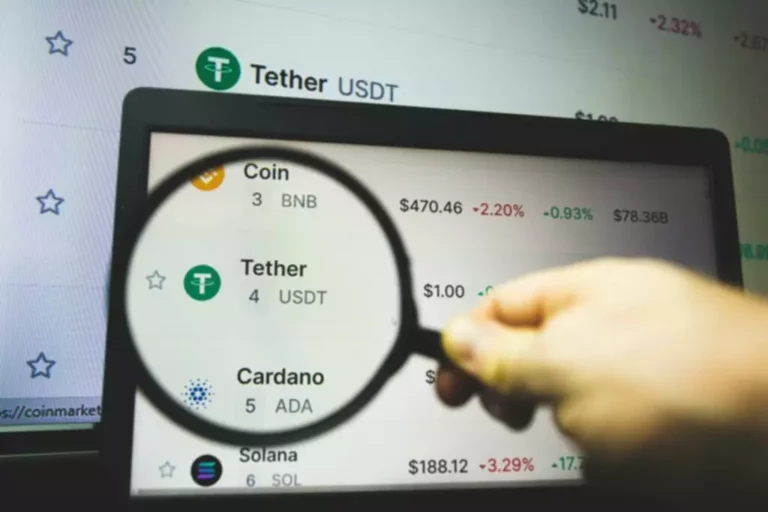This additionally reduces the chance of slippage, since prices are more in sync with different markets. Currently, developers are building newer iterations of AMMs to overcome drawbacks like slippage and impermanent loss, as well as others like safety, smart contract vulnerability, and low capital effectivity. To put it another means, impermanent loss is the chance cost that LPs tackle by offering liquidity as an alternative of simply holding their digital property. Impermanent loss happens when the price ratio of pooled property deviates from the tokens’ preliminary values. Liquidity providers automatically incur losses if and only once they withdraw funds throughout a interval of such fluctuation.

Traders and liquidity suppliers want to contemplate the liquidity and depth of the pool to attenuate slippage and ensure efficient commerce execution. A conventional market maker is an individual or an institution that gives liquidity to a market by placing each purchase and sell orders on a trading platform utilizing an order guide. This market-making allows other market members https://www.xcritical.com/ to freely purchase and promote securities/digital property at fair costs. Curve Finance is one other top contender within the AMM area, focusing specifically on stablecoin trading. Its low-cost and low-slippage swapping between stablecoins is a major draw for traders looking for environment friendly and cost-effective trading options.
Good Contracts
Additionally, Curve makes use of a liquidity aggregator model, permitting customers to contribute their belongings to various swimming pools and earn rewards from transaction charges. SushiSwap is a popular fork of Uniswap which presents comparable features such as buying and selling, staking, and liquidity swimming pools. However, it differentiates itself by having a multi-chain method with help for over 16 blockchain networks. This permits for higher flexibility and accessibility for users trying to trade on different networks. AMMs democratize buying and selling by permitting anyone with tokens to turn out to be a liquidity supplier.
Curve Finance applies the AMM model to Ethereum-based tokens but specifically to low-risk Stablecoin pairs or pairs of coins with equal or similar value. 50% of the fees generated from swaps go to the Liquidity Providers while the opposite half goes to holders of the underlying governance token CRV with rewards rising relying on how lengthy CRV is locked for. If traders purchase BTC they diminish that aspect of the pool and increase the pool of USDT increasing the relative worth of BTC.

DeFi (Decentralized Finance) has been a scorching matter in latest times, with its promise of democratizing and improving the standard monetary system by way of peer-to-peer trading. However, whereas DeFi has brought about many innovations and alternatives, it additionally faces challenges, corresponding to low liquidity and high price negotiation prices due to the use of sensible contracts. From Bancor to Sigmadex to DODO and beyond, progressive AMMs powered by Chainlink trust-minimized services are offering new fashions for accessing quick liquidity for any digital asset. Not solely do AMMs powered by Chainlink assist create value motion in beforehand illiquid markets, however they do so in a extremely safe, globally accessible, and non-custodial manner. Traditional AMM designs require large quantities of liquidity to achieve the same stage of value impact as an order book-based change.
Risks Of First-gen Automated Market Makers
This is creating a a lot more competitive marketplace for liquidity provision and can doubtless lead to greater segmentation of DEXs. Impermanent Loss is the unrealised loss within the worth of funds added to a liquidity pool because of the impression of value change on your share of the pool. It’s a factor of the automated nature of DEFI and the volatility of the worth of asset pairs.

Exploiting value differential is recognized as arbitrage and is crucial for efficient markets of any sort. You could be wondering, what occurs when the exchange cannot find suitable matches to purchase and promote orders simultaneously? When liquidity is low, slippages happen, which suggests assets’ costs on the level of executing a trade shift before the trade is accomplished. Orca is a rising star in the world of DEXes, centered particularly on the Solana blockchain. With its emphasis on user-friendliness and quick transactions at low charges, it has rapidly gained popularity among merchants. AMMs operate on distributed ledgers or blockchains, eradicating the need for a government or middleman.
Automated market makers (AMMs) are a kind of decentralized trade (DEX) that use algorithmic “money robots” to make it straightforward for individual traders to purchase and sell crypto belongings. Instead of trading immediately with other people as with a standard order e-book, users trade immediately through the AMM. An automated market maker (AMM) is a sort of decentralized trade that operates on a mathematical formula to cost property. What makes decentralized exchanges completely different from centralized exchanges is the process they undertake to hold out the buying and selling course of. Decentralized exchanges worth the assets as per a pricing algorithm, in distinction to conventional exchanges that use an order book. Automated market makers (AMMs) are decentralized exchanges that use algorithmic “money robots” to provide liquidity for traders shopping for and promoting crypto assets.
Fixed Product Market Maker (cpmm)
Trading fees are a supply of passive revenue for liquidity suppliers, and so they offset the currency risk of letting others trade against the pool’s belongings. Trading fees are paid to the AMM, not on to liquidity providers, but liquidity suppliers benefit as a result of their LP Tokens can be redeemed for a percentage of the AMM’s pool. LP Tokens are like different tokens within the XRP Ledger, so you can use them in plenty of kinds of payments or commerce them in the decentralized trade.
Moreover, it is one of the many ways to draw increasingly more liquidity providers to the fold. One integration with 0x unlocks hundreds of tokens on the most well-liked blockchains and aggregated liquidity from 100+ AMMs and personal market makers. Learn how you can leverage Swap API to entry deep liquidity without the infrastructure overhead. Whenever anyone places a new vote, the AMM recalculates its charge to be a median of the most recent votes weighted by what quantity of LP Tokens those voters maintain. Up to 8 liquidity suppliers’ votes could be counted this manner; if more liquidity suppliers try to vote then solely the top eight votes (by most LP Tokens held) are counted.
They can redeem some or all of these LP Tokens to withdraw assets from the AMM in proportion to the quantities at present there. (The proportions shift over time as folks trade towards the AMM.) The AMM does not cost a fee when withdrawing each assets. The XRP Ledger’s implements a geometric imply AMM with a weight parameter of zero.5, so it capabilities like a constant product market maker.
Learn extra about what pockets addresses are, what differentiates them throughout blockchains, and how you can follow pockets security techniques when dealing with cryptocurrency. Uniswap is a market maker big with over $3 billion total worth locked (TVL), dominating over 59% of total DEX volume. As per the formula, if the supply of 1 token (x) increases, the supply of the other token (y) must lower, and vice versa, to uphold the fixed worth (k).

Here, the protocol swimming pools liquidity into good contracts such that customers are not technically buying and selling in opposition to counterparts however the liquidity locked inside good contracts. Automated market makers are a category of algorithms used in decentralized exchanges (DEXs) to offer liquidity and determine asset costs. Unlike traditional crypto or stock exchanges that depend on order books, AMMs operate by way of liquidity pools and mathematical formulas.
Still, Flash Loans are additionally being used to control and deform crypto asset prices and generate huge returns for those with the skills to understand the darkish aspect of DEFI. Although the AMM may not have been the primary on the block, its successors have offered the necessary liquidity to maintain the scalability of the market making the DeFi industry afloat. Automated market making methods are a major step toward realizing the dream of decentralized finance.
- For more details on how DeFi and crypto perpetuals trading works, take a glance at the tutorial guides on dYdX Academy.
- Traditional market makers are sometimes companies or people who stand ready to buy and promote property at constant costs, cashing in on the unfold between buying and promoting costs.
- Unlike traditional systems that depend on buyers and sellers to create liquidity, AMMs use liquidity swimming pools and algorithmic price dedication, which ensures constant market liquidity and availability.
- With its emphasis on user-friendliness and quick transactions at low charges, it has rapidly gained recognition amongst merchants.
- The the rest of the code is a SHA-512 hash, truncated to the first 152 bits, of the 2 belongings’ forex codes and their issuers.
An Automated Market Maker (AMM) within the crypto world is a kind of decentralized exchange protocol that relies on a mathematical formula to cost belongings. Instead of utilizing traditional order books like typical exchanges, AMMs make the amm in crypto most of smart contracts to create liquidity swimming pools. For instance, dYdX uses an off-chain orderbook mannequin to offer eligible customers a quick and efficient crypto buying and selling expertise.

The most popular example of an AMM is Uniswap, a decentralized trade built on Ethereum. Using Uniswap, customers have greater than 1,500 ERC-20 trading pairs to select from and there is presently more than $3.45 billion locked in liquidity swimming pools by customers. Since its launch in 2018, Uniswap has cleared greater than $1.2 trillion in trade quantity throughout more than 125 million trades.
This situation can solely occur as the results of an AMMWithdraw transaction; when it does, the AMM is mechanically deleted. For example, should you created an AMM with 5 ETH and 5 USD, after which someone exchanged 1.26 USD for 1 ETH, the pool now has 4 ETH and 6.26 USD in it. For extra details on how DeFi and crypto perpetuals trading works, take a look at the educational guides on dYdX Academy. Prices are decided by the best worth a purchaser is willing to pay (bid) and the lowest value a vendor is keen to just accept (ask).